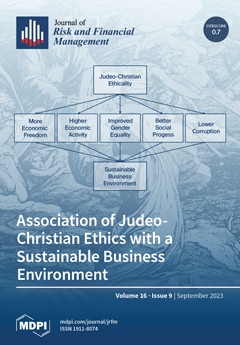The standard formulas for calculating the value of a firm’s tax shield and its weighted average cost of capital (
WACC) use the assumption that the underlying cash flows are perpetuities. Yet, most projects will have a finite useful life. Because the
[...] Read more.
The standard formulas for calculating the value of a firm’s tax shield and its weighted average cost of capital (
WACC) use the assumption that the underlying cash flows are perpetuities. Yet, most projects will have a finite useful life. Because the perpetuity approach will overstate the value of a finite-life project’s tax shield, this factor will pressure the perpetuity-formula
WACC to be less than the finite-life
WACC. However, a large portion of the value of a perpetual tax shield can be attributed to interest payments during the next 5, 10, or 25 years, making it possible for the perpetuity-formula
WACC to be greater than the finite-life
WACC. Using a series of numerical examples, this paper shows that the finite-life
WACC can be either higher or lower than the perpetuity-formula
WACC depending on the project’s useful life, the required return on the unlevered project, the firm’s capital structure, the cost of debt, the marginal tax rate, and the debt repayment pattern (e.g., coupon bonds or amortizing loans). The analysis in this article helps managers better understand the potential biases introduced into the capital budgeting process when using the perpetuity-formula
WACC to evaluate projects with finite useful lives.
Full article




